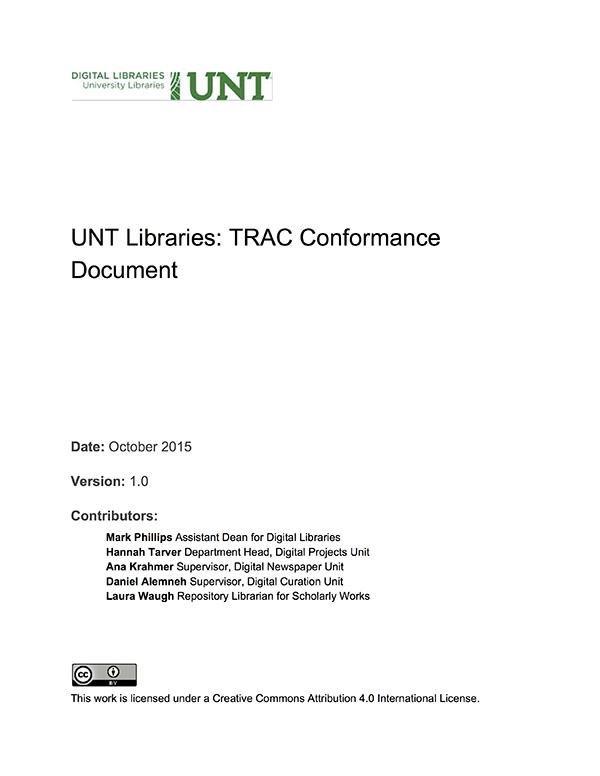UNT Libraries' TRAC Conformance Document Released

The UNT Libraries are proud to announce that the UNT Libraries’ Digital Collections have completed a self-audit of their digital repository policies, documentation, and infrastructure in accordance with the Trustworthy Repositories Audit & Certification: Criteria and Checklist (TRAC). The goal of this audit was to formalize processes and create documentation necessary for the operation of a trusted digital repository. All documentation related to the process is available on the Digital Libraries Division’s Trusted Digital Repository web page.
UNT Libraries: TRAC Conformance Document serves as an audit of the activities and methodologies behind the preservation of and access to content in the UNT Libraries’ Digital Collections. The audit examined two major infrastructure pieces: the Coda repository system, used for preservation services, and the Aubrey system, which provides public access to digital resources through The Portal to Texas History, the UNT Digital Library, and the Gateway to Oklahoma History.
The team involved with this audit included the following participants:
- Mark Phillips, Assistant Dean for Digital Libraries
- Hannah Tarver, Department Head, Digital Projects Unit
- Ana Krahmer, Head, Digital Newspaper Unit
- Daniel Alemneh, Head, Digital Curation Unit
- Laura Waugh, Repository Librarian for Scholarly Works
In addition to those listed above, numerous individuals throughout the UNT Libraries contributed to the documentation effort.
This self-audit was completed in partnership with the University of Florida George A. Smathers Libraries, whose team is moving toward completion of a similar audit process on University of Florida’s Digital Collections and its associated infrastructure. After completing their respective self-audits, these two institutions will create and perform a peer-review process for each other, with the end goal of developing a viable, replicable process that other institutions can use in their own peer-review audit processes.


